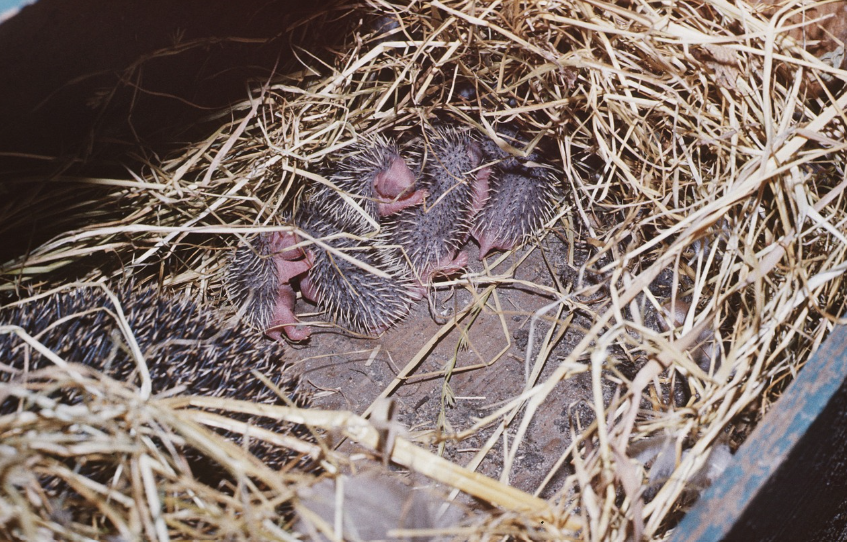In the enchanting world of nature, where every creature holds its own charm, hedgehogs stand out as unsung heroes of the animal kingdom. Beyond their endearing appearance and remarkable survival instincts, these spiky mammals harbor a secret talent that often goes unnoticed: their ability to create intricate, labyrinthine nests.
The secret world of hedgehog nests: A closer look

While many envision hedgehogs as solitary wanderers, they are actually master architects of cozy abodes. Using their keen sense of smell and impeccable memory, hedgehogs meticulously construct nests woven from twigs, leaves, and other natural materials. These nests are not just places of rest but serve as intricate havens, complete with multiple chambers and secret passageways.
What truly sets hedgehog nests apart is their ingenious design. Each nest is uniquely tailored to suit the hedgehog’s preferences and environment. Some may feature hidden compartments for storing food, while others boast elaborate escape routes for evading predators. It’s a testament to the hedgehog’s ingenuity and adaptability in the wild.
Furthermore, these nests serve as more than just shelter; they play a vital role in the hedgehog’s lifecycle. From raising their young to hibernating through harsh winters, hedgehogs rely on their meticulously crafted nests for survival. It’s a testament to nature’s brilliance and the often-overlooked genius of these humble creatures.
As we delve deeper into the world of hedgehogs, let us not only admire their adorable appearance but also marvel at their hidden talents. From their intricate nests to their remarkable resilience, hedgehogs continue to captivate and inspire, reminding us of the extraordinary wonders that abound in the natural world.
Amazing facts about hedgehogs

Hedgehogs are quite widespread creatures, with 17 different species roaming across Europe, Africa, and Asia. You can find them in various places in the UK, from woodlands to parks, and even in bustling cities. Surprisingly, they thrive in urban environments, making good use of places like cemeteries, railway lands, and gardens, as long as there’s food, shelter, and opportunities to socialize with other hedgehogs.
These little creatures are night owls by nature, preferring to stay out of the scorching heat. During winter, they hibernate snugly in nests crafted from fallen leaves until March. Even in spring, they tend to snooze through the day, only coming alive once the sun sets.
It used to be a widespread belief that hedgehogs had a knack for snatching milk straight from cows, perhaps explaining why people often left out milk for them. However, hedgehogs are actually lactose intolerant! So, if you’re looking to offer a snack to your neighborhood hedgehog, opt for wet cat food or specialized hedgehog food found in most garden centers.
Despite their adorable exterior, these prickly critters are fierce carnivores with quite the appetite. Their menu includes a variety of prey such as worms, slugs, earwigs, millipedes, beetles, and other small insects. Occasionally, they might indulge in frogs, fledglings, snakes, bird eggs, and even some fruits.
While their vision might not win any awards, hedgehogs compensate with keen hearing and a finely tuned sense of smell.
If hedgehogs participated in a triathlon with climbing instead of cycling, they’d be natural contenders. They excel at running, are skilled climbers, and can even navigate through water with ease.
Don’t let their size fool you; hedgehogs are surprisingly speedy creatures, reaching top speeds of 9.5km/h (about 5mph) for short sprints!
Hedgehogs come in at about 20-25cm in length, weighing as much as a pineapple, typically around 1.2kg. Their backs and sides sport spines, each about 25mm long, resembling modified hairs. Interestingly, these spines skip the face, chest, belly, throat, and legs, which are instead covered in a coarse, grey-brown fur. Surprisingly, hidden beneath all those spines, a hedgehog has a small tail.
Unfortunately, the beloved spiky residents of the UK are facing a serious decline. Although keeping tabs on hedgehog populations is tricky, evidence suggests a staggering drop by over half in rural areas and about a third in urban regions since 2000.
Despite having an average lifespan of two to three years, many hedgehogs meet untimely ends due to unintended causes. Whether it’s encountering roads, lawnmowers, trimmers, or garden chemicals, their lives are often cut short tragically.
